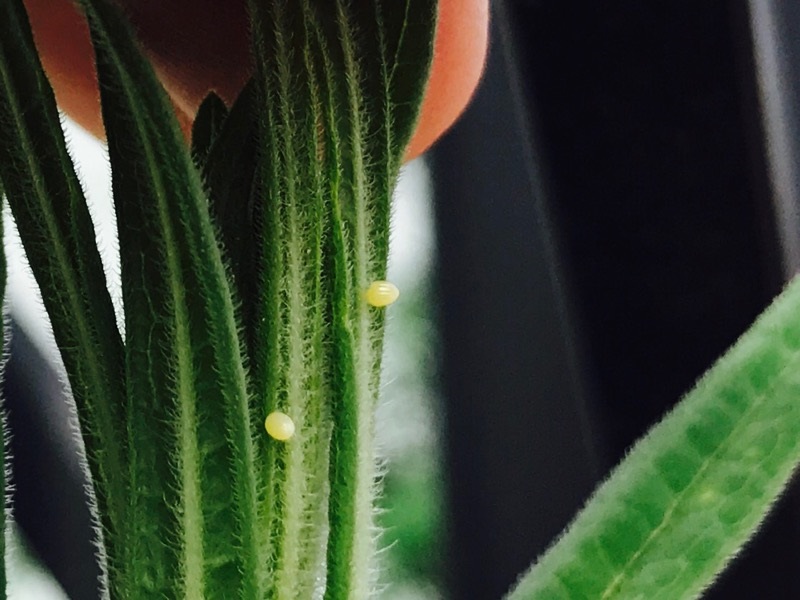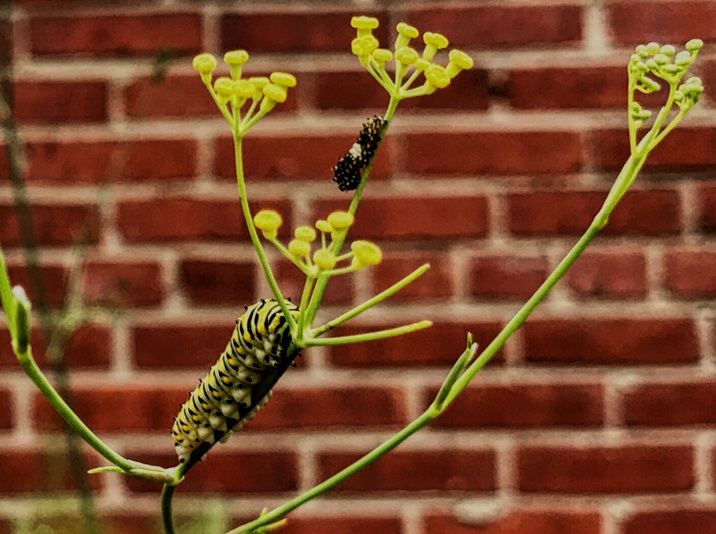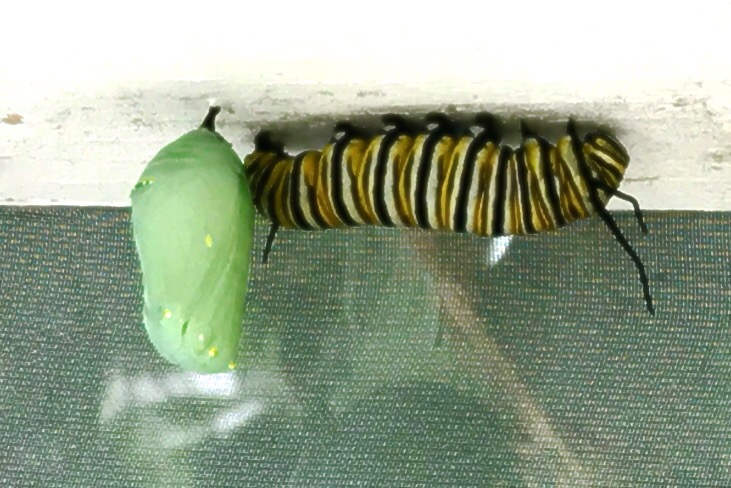Butterfly Metamorphosis and the Human Psyche
Why are humans so captivated by butterflies? I’m willing to posit it has more to do with their extraordinary journey through complete butterfly metamorphosis than it has to do with their spectacular coloration. Considering that the ancient Greeks used the same word, “psyche,” to refer to both the butterfly and the soul, we clearly associate the butterfly with some inherently beautiful aspect of our own lives…albeit one slightly veiled. Before we can delve deeper into butterflies as a metaphor, let’s take a hard look at the science behind butterfly metamorphosis.

Monarch eggs are only found on milkweed! They are cylindrical in shape and tend to be a creamy off-white color.
Butterfly Metamorphosis
This is truly one of nature’s most miraculous events. The caterpillar actually liquefies, unwinding and rewinding its DNA before transforming into our favorite four-winged insect. During this time the pupa is still somewhat aware of its surrounding and can wiggle and respond to stimuli.
Caterpillar Nursery
Here we keep a collection of butterfly host plants for our native butterflies to lay their eggs on. Female butterflies will only lay their eggs on these specific host plants because they’re the only appropriate food for her offspring. Caterpillars start off teeny tiny but with their specialized diet and voracious appetites will grow at an astonishing rate, nearly doubling in size every day! To keep up with their ever-increasing waistline, the caterpillars have to shed their exoskeleton, called molting. Each time they molt they become a new instar, which signifies a new stage of maturation.
Often, different instars will look drastically different. For example, swallowtail caterpillars look rather unassuming for their first three instars. Their brown, black, and splotchy appearance is thought to be a form of protective camouflage. In fact, its thought that it is trying to imitate bird poop! After the caterpillar has grown large enough to be readily noticeable and can no longer pass itself off as bird droppings it looks quite different.
Once the caterpillar has grown to appropriate size, its hormone secretions will change. This causes the caterpillar to crawl away from its host plant, and in effect, away from everything it has ever known. The caterpillars now look for a camouflaged place to pupate. Once they find the right place, the caterpillar will spin a piece of silk with which it secures itself in place. At this point, the caterpillar enters the pupal position. This will vary by species, but generally, the pupal position is a rigid curved shape. It will stay in pupal position for a rather long time, sometimes more than 24 hours. Eventually, a thin seam in the caterpillar’s last instar will appear. With some wiggling and shaking about, the caterpillar molts to reveal the brand new chrysalis, lurking beneath!
Butterfly Emergence Box
A few steps down from the caterpillar nursery is our butterfly emergence box. At first glance, it might not seem like much is happening, but if you’re lucky, you might catch a butterfly eclosion! Eclosion, the most exciting stage of butterfly metamorphosis, is the scientific word for a butterfly’s emergence from its chrysalis. It has also been called “the exquisite risk” by poet Mark Nepo, and rightfully so! This is perhaps the most daunting feat of the entire metamorphosis saga! Time is of the essence and the actual instance of eclosion takes not more than a few minutes. Once the butterfly is safely out of its chrysalis it must then hang upside from and pump fluid from its swollen abdomen into wet and shriveled wings. This is perhaps the most critical part, because the butterfly’s wings will dry begin to dry within the first hour of eclosion, so they must be able to hang freely and unobstructed, letting gravity do much of the work. While the wings are expanding the butterfly zips up its proboscis, which initially is two halves of one straw. Assuming that there are no complications, the butterfly will continue to hang upside down until its ready for its first flight. Here at Lewis Ginter Botanical Garden we release these newly formed butterflies for their first flight every day 10 a.m. and on Saturday at 10 a.m. and 2 p.m. Please join us for a visit at M&T Bank Butterflies LIVE! now through October 14, 2018, to celebrate the butterfly’s miraculous journey through metamorphosis.

